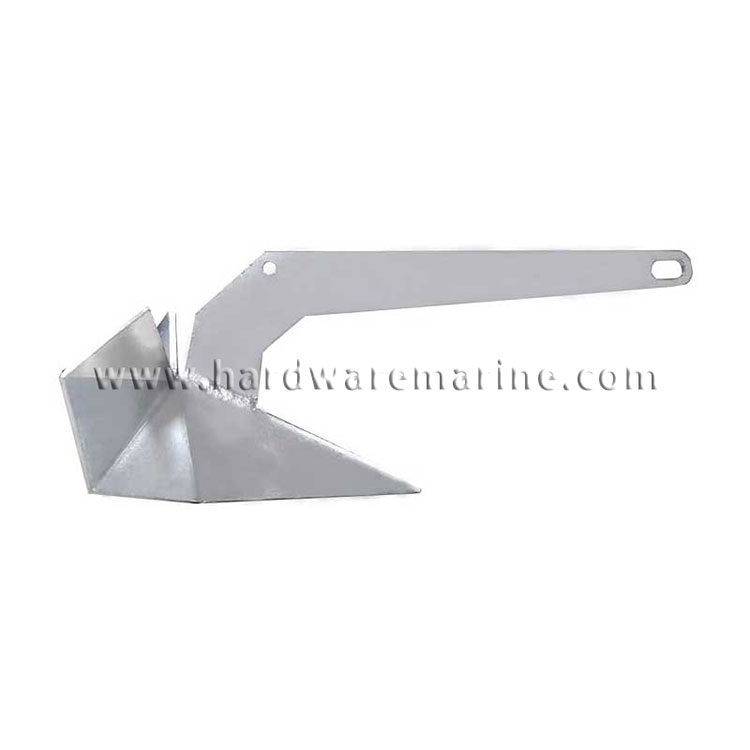Prolonging Strength: Recommended Maintenance Practices for Your Hot Dip Galvanized Delta Anchor
2024-06-24
The Hot Dip Galvanized Delta Anchor is a robust and reliable tool for securing your vessel, thanks to its superior corrosion resistance and durability. However, like any piece of marine equipment, it requires proper maintenance to ensure its longevity and optimal performance. In this blog, we’ll explore the recommended maintenance practices that will help you get the most out of your Hot Dip Galvanized Delta Anchor.
1. Regular Inspection
Visual Checks: Regularly inspect your anchor for any signs of wear, damage, or corrosion. Look for cracks, dents, or areas where the galvanization may have worn off. These checks should be performed before and after each use to catch any issues early.
Feel for Rough Spots: Run your hands along the surface of the anchor to detect any rough spots or irregularities that might indicate the zinc coating is wearing thin.
2. Cleaning After Use
Rinse with Fresh Water: After each use, especially in saltwater environments, rinse the anchor thoroughly with fresh water. This helps to remove salt, sand, and other debris that can cause abrasion and corrosion over time.
Use a Soft Brush: For more thorough cleaning, use a soft brush to scrub away any stubborn dirt or marine growth. Avoid using wire brushes or abrasive materials that can damage the zinc coating.
3. Proper Storage
Dry Storage: Store the anchor in a dry place when not in use. Prolonged exposure to moisture can accelerate corrosion, even with a galvanized coating. If possible, store the anchor in a location with good air circulation to help it dry quickly.
Avoid Contact with Other Metals: When storing the anchor, ensure it is not in contact with other metals, especially non-galvanized ones. This can cause galvanic corrosion, where the metals react with each other, leading to faster deterioration.
4. Periodic Re-Galvanization
Assessing the Zinc Coating: Over time, the zinc coating on your anchor may wear thin. Periodically assess the thickness of the coating and consider re-galvanizing if significant wear is noticed. Re-galvanizing can restore the protective layer and prolong the anchor’s lifespan.
Professional Re-Galvanization: Have the re-galvanization done by a professional to ensure it is done correctly. This process involves cleaning the anchor, removing the old zinc layer, and reapplying a new coating, ensuring comprehensive protection.
5. Preventative Measures
Use Anchor Rode: Use an anchor rode (a combination of chain and rope) to reduce the wear on the anchor shank. The chain helps absorb the shock and reduces the direct impact on the anchor, thereby extending its life.
Avoid Abrasive Seabeds: When possible, avoid anchoring in areas with rocky or abrasive seabeds that can damage the zinc coating. Sand and mud are less likely to cause significant wear.
6. Lubrication of Moving Parts
Shackle and Swivel Maintenance: Lubricate any moving parts, such as shackles and swivels, with a marine-grade lubricant. This helps to prevent rust and ensures smooth operation. Regularly check these components for wear and replace them as needed.
7. Monitor for Signs of Corrosion
Spot Treatment: If you notice small areas of corrosion starting to form, treat them immediately. Clean the affected area with fresh water, dry it thoroughly, and apply a cold galvanizing compound or zinc-rich paint to the spot. This can help to stop the spread of corrosion and maintain the integrity of the anchor.
8. Routine Professional Inspection
Annual Check-Up: At least once a year, have a professional inspect your anchor for any signs of significant wear or damage. A professional can provide a thorough assessment and recommend any necessary repairs or maintenance to keep your anchor in top condition.
Conclusion
Maintaining a Hot Dip Galvanized Delta Anchor involves regular inspections, proper cleaning, and periodic re-galvanization to ensure its durability and performance. By following these recommended maintenance practices, you can extend the lifespan of your anchor and ensure it remains reliable for all your marine adventures. Proper care and attention will keep your anchor in excellent condition, providing peace of mind and security as you navigate the waters. Remember, a well-maintained anchor is the foundation of safe and successful boating.


